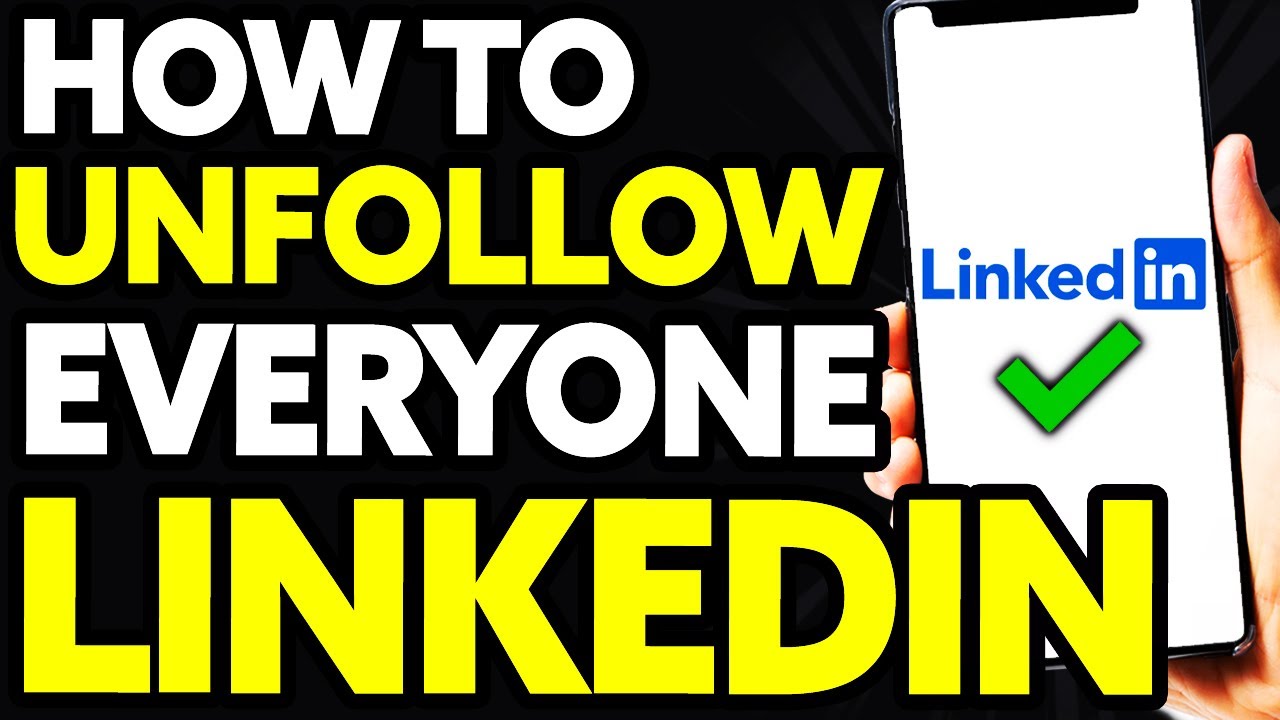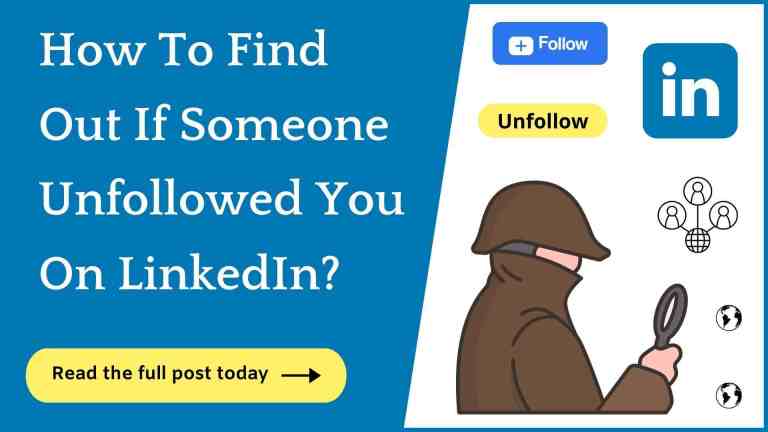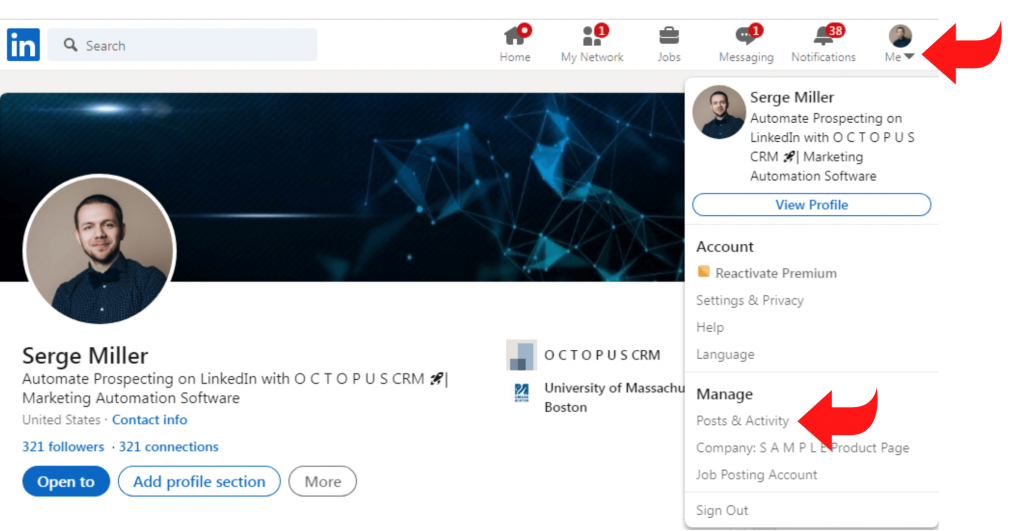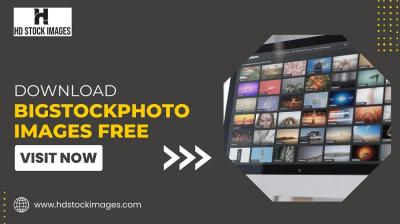Managing your LinkedIn feed is crucial for creating a professional environment that aligns with your career goals. With the platform’s vast network, you might find yourself overwhelmed by posts and updates that aren't relevant to you. Understanding how to curate your feed not only enhances your experience but also allows you to focus on meaningful connections and valuable content. So, let’s dive into the basics of LinkedIn feed management and how unfollowing certain connections can play a pivotal role.
Why You Might Want to Unfollow Someone on LinkedIn

Ever scroll through your LinkedIn feed and wonder why certain posts are clogging it up? It’s a common scenario! Here are several reasons why you might consider unfollowing someone:
- Irrelevant Content: If a connection frequently shares posts that don't align with your interests or industry, it can be distracting. For instance, if you're in tech and someone you’re connected with posts about fashion constantly, it might be time to unfollow.
- Overposting: Some users may overshare or post excessively. If your feed is filled with too many updates from one person, it can overshadow more significant posts that deserve your attention.
- Negative Vibes: We’ve all encountered posts that are overly negative or contentious. If someone’s updates bring down the positivity in your feed, it might be beneficial for your mental space to unfollow them.
- Promotional Content: If a connection uses their profile mainly for self-promotion rather than providing valuable insights or engaging with others, it can feel more like spam than meaningful content.
- Changing Professional Interests: As your career evolves, so do your connections. If your goals have shifted and your current connections no longer serve your professional aspirations, unfollowing them can help you focus on what matters now.
Ultimately, unfollowing someone on LinkedIn is about ensuring that your feed serves you. You want it to be a source of inspiration, knowledge, and networking opportunities. Remember, unfollowing doesn’t mean severing ties; it simply allows you to curate your professional landscape better. So, take control of your LinkedIn experience and make those adjustments—your future self will thank you!
Also Read This: How Many Photos Can You Post on LinkedIn at Once?
3. Step-by-Step Guide to Unfollow Someone on LinkedIn

Unfollowing someone on LinkedIn is a straightforward process that allows you to manage your feed better without needing to disconnect entirely. Here’s a simple, step-by-step guide to help you through it:
- Log into Your LinkedIn Account: Start by logging in to your LinkedIn account. Ensure you’re on your homepage where you can see your feed.
- Find the Person You Want to Unfollow: Scroll through your feed, or head to their profile by searching their name in the search bar. You can also access your connections list to find them.
- Access the 'More' Menu: On their profile page, look for the 'More' button, which is located right next to the 'Message' button. Click on it to reveal a dropdown menu.
- Select 'Unfollow': In the dropdown menu, you’ll see the option to 'Unfollow'. Click on this option, and voilà! You’ve unfollowed them.
- Confirmation: Once you click 'Unfollow', you may not see a confirmation message, but rest assured, their updates will no longer appear in your feed.
And that’s it! You’ve successfully unfollowed someone on LinkedIn. You can repeat this process for anyone else you wish to unfollow. If you ever change your mind, simply follow the same steps and click 'Follow' instead. It’s that easy!
Also Read This: What Does '2nd' Mean on LinkedIn? A Quick Guide to Connection Types
4. How Unfollowing Impacts Your LinkedIn Experience

Unfollowing someone on LinkedIn can have several impacts on your overall experience on the platform. Here’s how it can transform your feed and your professional networking:
- Cleaner Feed: By unfollowing individuals whose posts clutter your feed, you create a cleaner, more relevant space. This means less noise and more focus on content that matters to you.
- Enhanced Focus: With fewer distractions, you’re better positioned to engage with posts that align with your interests and career goals. This helps in staying updated on industry trends and connecting with like-minded professionals.
- Better Networking Opportunities: By curating who you follow, you can prioritize connections that offer valuable insights or opportunities. This can lead to meaningful conversations and potential collaborations.
- Personalized Content: The LinkedIn algorithm learns from your engagement. When you unfollow irrelevant connections, the platform starts recommending content that aligns more closely with your professional interests.
However, it’s essential to remember that unfollowing doesn’t mean severing ties. Your connections can still see your posts, and you can still interact with them privately via messages. It’s a way to maintain a professional relationship without the constant barrage of their updates.
In summary, unfollowing someone on LinkedIn helps you streamline your feed, enhances focus, and opens up personalized content visibility, enriching your overall experience on the platform. So, don’t hesitate to manage your connections wisely!
Also Read This: How to Connect with Someone on LinkedIn and Build Relationships
5. Alternative Options: Mute vs. Unfollow

When it comes to managing your LinkedIn feed, you might be wondering whether to mute or unfollow someone. Both options are great for controlling what you see, but they serve different purposes, and understanding the nuances can help you make the best choice.
Unfollowing someone means you won’t see their posts in your feed anymore. This is a more definitive action. If you unfollow a connection, you won’t receive any updates from them, and you’ll no longer see their activity. However, you remain connected, meaning you can still view their profile and interact with them if needed.
On the other hand, muting is a more subtle approach. When you mute someone, you won’t see their updates, but they won’t know you’ve muted them. This can be particularly useful if you want to take a break from someone’s posts without severing ties altogether. Muting can help if you’re feeling overwhelmed by certain topics or posts but still want to maintain the connection for networking purposes.
Here’s a quick comparison to help clarify:
- Unfollow:
- Removes all posts from your feed.
- Connection remains intact.
- Ideal for when you’re not interested in their updates at all.
- Mute:
- Stops updates from appearing in your feed.
- Connection remains intact and private.
- Great for temporary breaks or if you want to avoid conflict.
Ultimately, if you find someone’s posts unhelpful or annoying, you might lean towards unfollowing them. But if you still appreciate the connection and might want to interact later, muting can be a more tactful option.
6. Tips for Curating a Positive LinkedIn Feed
A well-curated LinkedIn feed can be a source of inspiration and valuable insights. Here are some practical tips to ensure that what you see enriches your experience:
- Engage with Relevant Content: Actively like, comment, and share posts that resonate with you. This signals to LinkedIn’s algorithm that you want to see more of this type of content.
- Follow Influencers and Thought Leaders: Following industry leaders can expose you to high-quality insights and trends. Look for individuals who share valuable knowledge, not just promotional content.
- Join Groups: Participating in LinkedIn groups related to your interests can enhance your feed. Groups often share specialized content that can be more relevant to your professional development.
- Regularly Review Your Connections: Periodically assess who you are connected with. If someone’s content isn’t aligning with your professional goals anymore, don’t hesitate to unfollow or mute them.
- Customize Your Feed Preferences: You can adjust your feed preferences to prioritize certain kinds of content or people. This feature helps in fine-tuning what you see.
Remember, your LinkedIn feed should reflect your professional interests and aspirations. By actively managing your connections and the content you engage with, you can create a positive and motivating environment that supports your career growth.
 admin
admin








